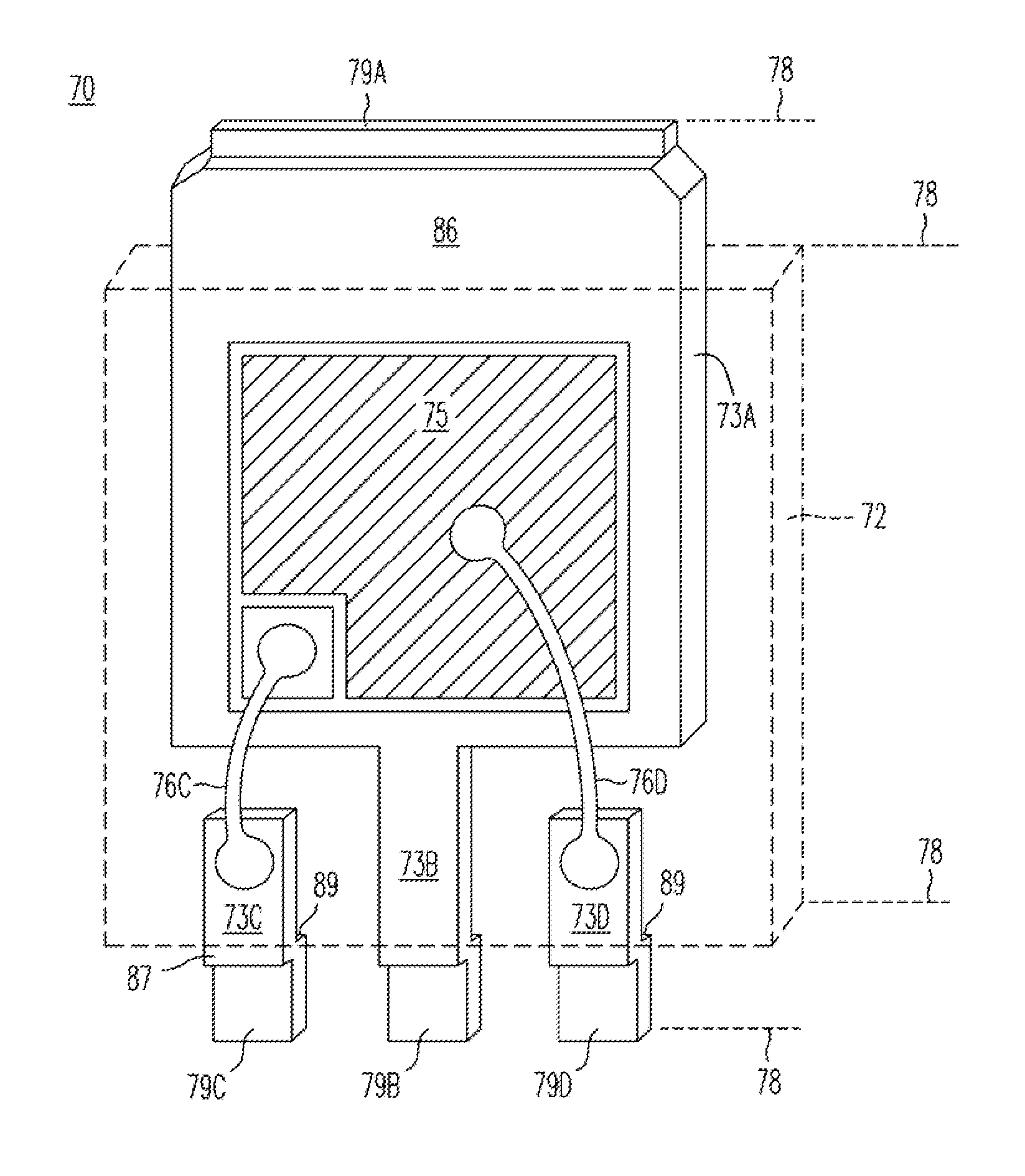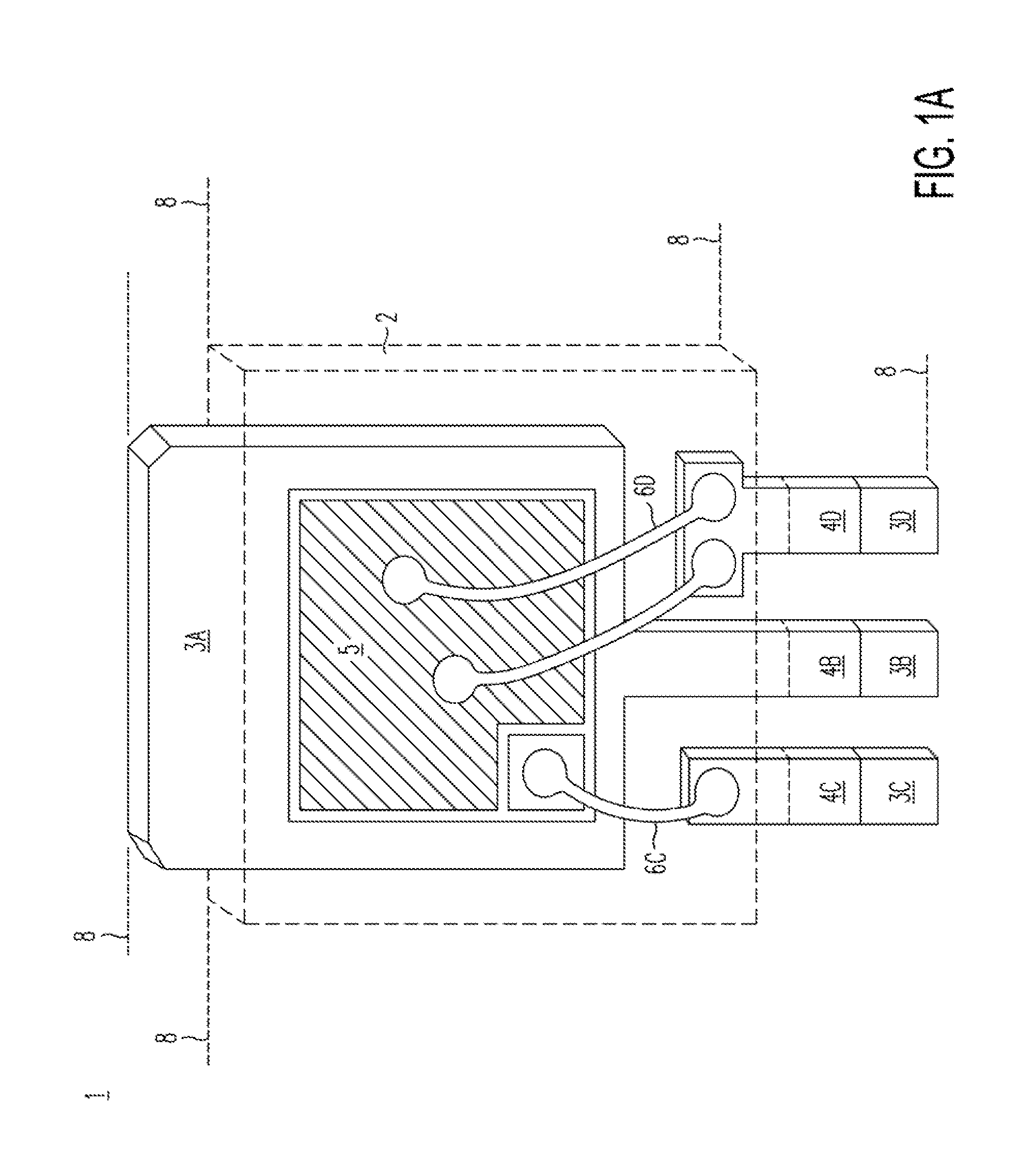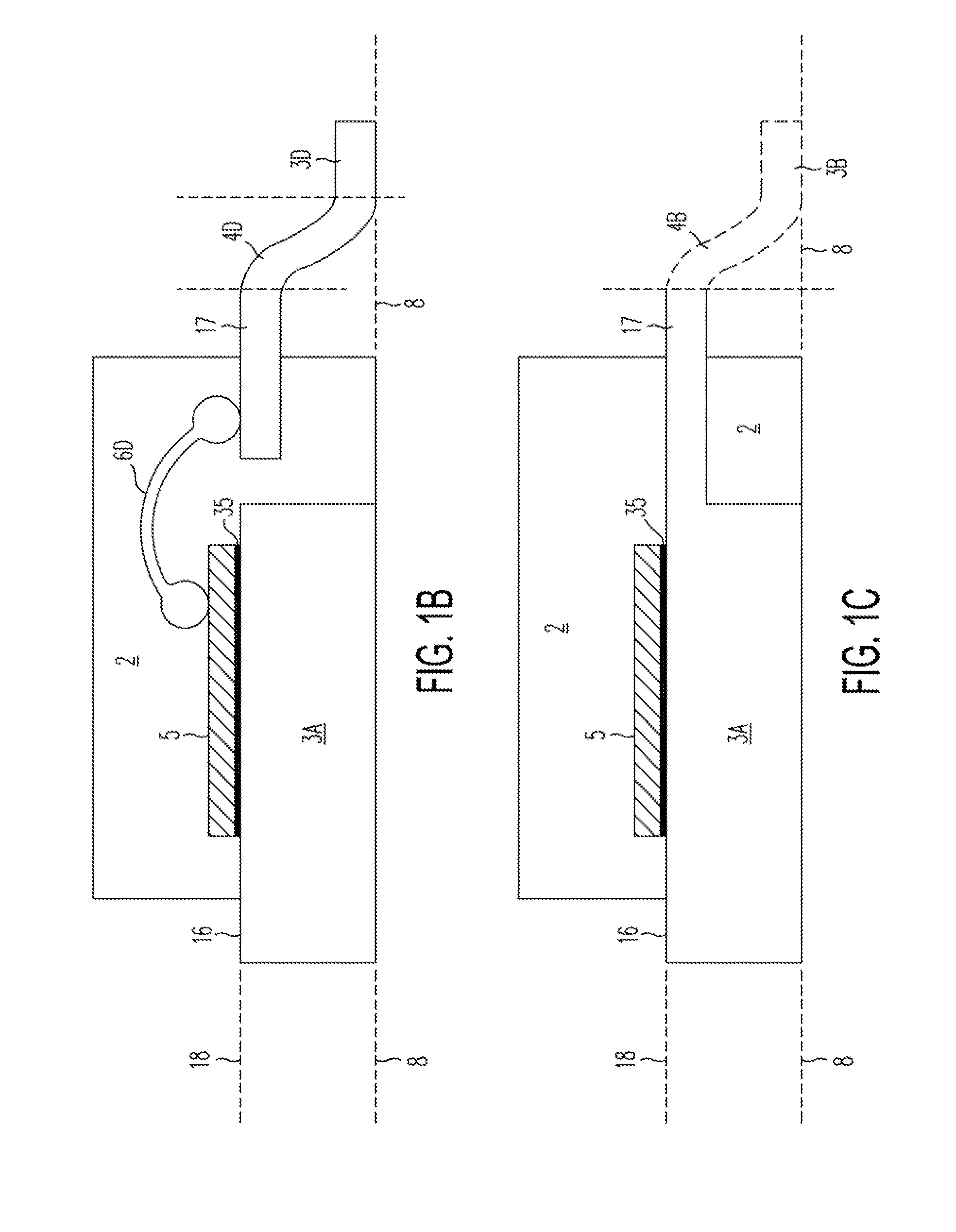Low-Profile Footed Power Package
a power package and low-profile technology, applied in the field of semiconductor package, can solve the problems of difficult manufacturing of any of these packages, difficult forming, tight specifications and tolerances, etc., and achieve the effects of cost-effective manufacturing line, improved co-planarity, and flexible, versatile technology
- Summary
- Abstract
- Description
- Claims
- Application Information
AI Technical Summary
Benefits of technology
Problems solved by technology
Method used
Image
Examples
Embodiment Construction
[0120]In order to advance today's power package technology, certain fundamental changes must be made in the manufacturing process, package and leadframe design. Improvements desirable in a next generation power package include[0121]Guaranteed co-planarity of leads and the back of an exposed die pad[0122]Solderable, using both wave soldering and reflow PCB manufacturing[0123]Reasonably low thermal resistance without using solder preplaced under heat tab[0124]Low-profile capable[0125]Reduced inductance, shorter lead and bond wire length[0126]Good PCB areal efficiency, i.e. large die area for a given PCB footprint[0127]Flexible pin out, with no requirement to tie the leads to the die pad[0128]Flexible number of conductive leads, available on one two or three sides[0129]Elimination of lead bending (forming) machines[0130]Minimal expense for mold cavity tools
[0131]Using the invention disclosed herein, such features and benefits are readily available with minimal or no new investment in r...
PUM
 Login to View More
Login to View More Abstract
Description
Claims
Application Information
 Login to View More
Login to View More - R&D
- Intellectual Property
- Life Sciences
- Materials
- Tech Scout
- Unparalleled Data Quality
- Higher Quality Content
- 60% Fewer Hallucinations
Browse by: Latest US Patents, China's latest patents, Technical Efficacy Thesaurus, Application Domain, Technology Topic, Popular Technical Reports.
© 2025 PatSnap. All rights reserved.Legal|Privacy policy|Modern Slavery Act Transparency Statement|Sitemap|About US| Contact US: help@patsnap.com



